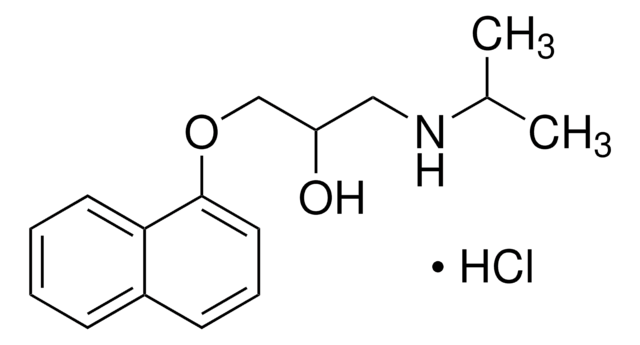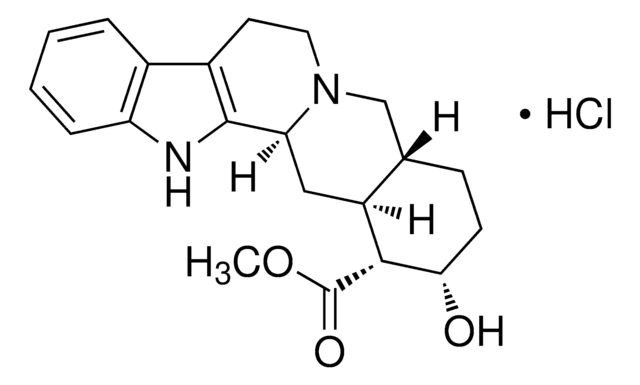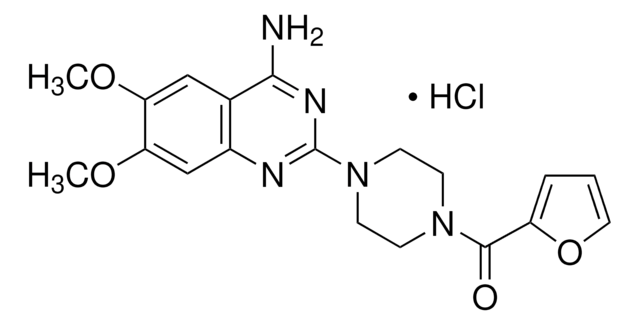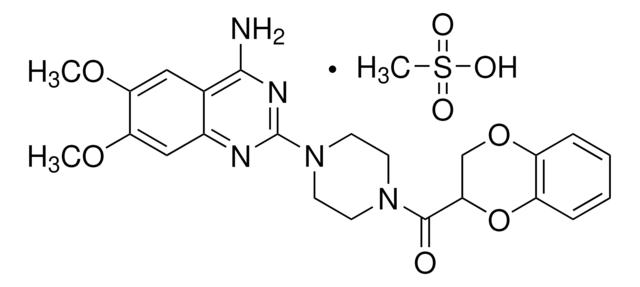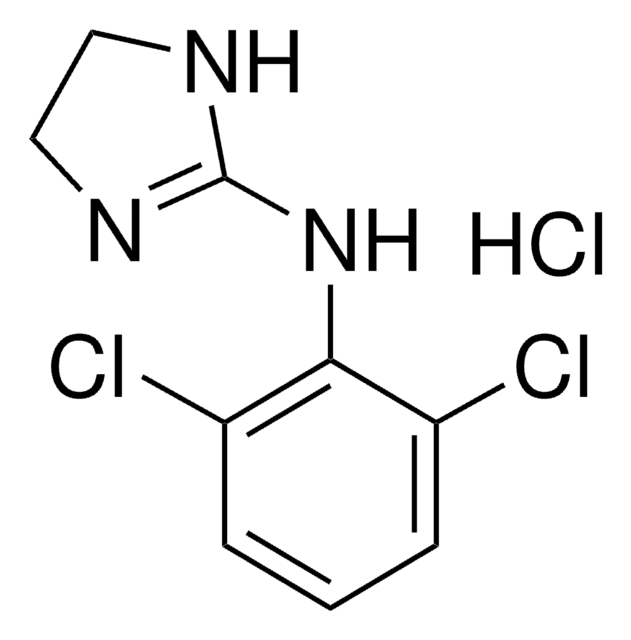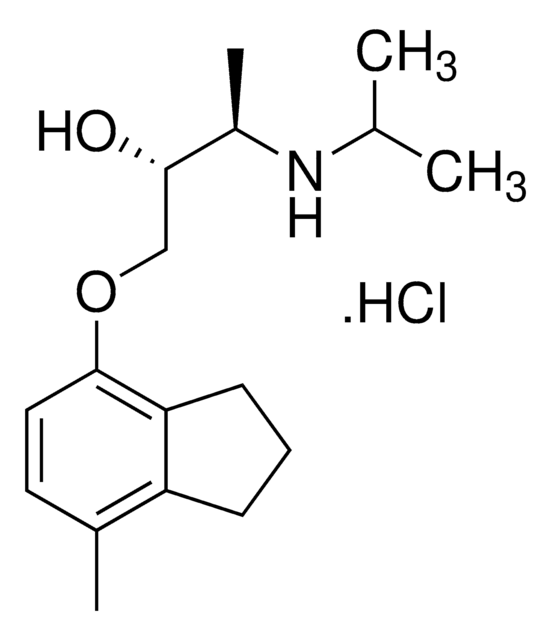P7791
Prazosin hydrochloride
≥99.0% (HPLC), powder, α1-adrenoceptor antagonist
Synonym(s):
1-(4-Amino-6,7-dimethoxy-2-quinazolinyl)-4-(2-furanylcarbonyl)piperazine hydrochloride, Furazosin hydrochloride
About This Item
Recommended Products
Product Name
Prazosin hydrochloride, ≥99.0% (HPLC)
Quality Level
Assay
≥99.0% (HPLC)
form
powder
solubility
H2O: 0.5 mg/mL
methanol: 6 mg/mL
dilute aqueous acid: insoluble
SMILES string
Cl.COc1cc2nc(nc(N)c2cc1OC)N3CCN(CC3)C(=O)c4ccco4
InChI
1S/C19H21N5O4.ClH/c1-26-15-10-12-13(11-16(15)27-2)21-19(22-17(12)20)24-7-5-23(6-8-24)18(25)14-4-3-9-28-14;/h3-4,9-11H,5-8H2,1-2H3,(H2,20,21,22);1H
InChI key
WFXFYZULCQKPIP-UHFFFAOYSA-N
Gene Information
human ... ADRA1A(148) , ADRA1B(147) , ADRA1D(146)
Looking for similar products? Visit Product Comparison Guide
General description
Application
- to block the α1adrenergic receptors that mediate sympathetic vasoconstriction in mice
- as an α1-adrenoceptor blocker,administered intragastrically in rats
- as a vasodilator,administered together with inuslin into the left ventricle of mice for the assessment of its effects on renal functions
Biochem/physiol Actions
Features and Benefits
Packaging
Caution
Signal Word
Warning
Hazard Statements
Precautionary Statements
Hazard Classifications
Repr. 2 - STOT RE 2 - STOT SE 3
Target Organs
Central nervous system
Storage Class Code
11 - Combustible Solids
WGK
WGK 3
Flash Point(F)
Not applicable
Flash Point(C)
Not applicable
Personal Protective Equipment
Choose from one of the most recent versions:
Already Own This Product?
Find documentation for the products that you have recently purchased in the Document Library.
Customers Also Viewed
Articles
Review alpha 1 adrenoceptors as well as their agonists, antagonists, and tissue expression patterns. We suggest several modulators and alternatives for working with a-1 adrenoreceptors.
Review alpha 2 adrenoceptors as well as their agonists, antagonists, and tissue expression patterns. We suggest several modulators and alternatives for working with a-2 adrenoreceptors.
Our team of scientists has experience in all areas of research including Life Science, Material Science, Chemical Synthesis, Chromatography, Analytical and many others.
Contact Technical Service